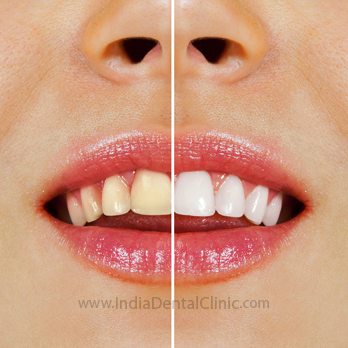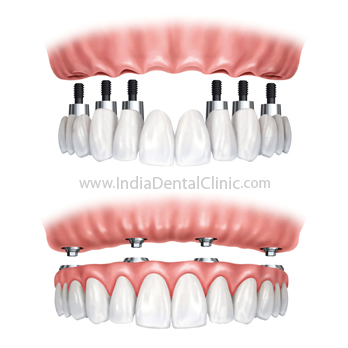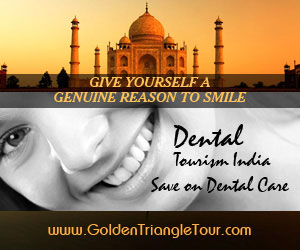Cosmetic Jaw Surgery
More On Oral & Maxillofacial Surgery
About OMF SurgeryCleft Lip & Palate
TMJ-TMD Treatment
Orthognathic Surgery
Wisdom Teeth
Oral Cancer
Anesthesia
Cosmetic Jaw Surgery in India
India Dental Clinic listing information of oral surgery centers and aesthetic dental surgery hospitals performing cosmetic jaw surgery in India. Affordable jaw surgery cost in India. Cosmetic Jaw Surgery is performed to achieve the esthetic expectations besides correcting moderate to severe teeth and jaw disorders. The orthognathic procedure that it helps remedy toothless or gummy smiles, deficient chins, protruding underbite and overbites, and other problem areas of the face including lips, neck, nose and cheeks. Cosmetic jaw surgery focuses on improving the patient's appearance as well as the functionality of the jaws and teeth. The common cosmetic jaw surgery procedures that many specialist oral & maxillofacial surgeons listed with India dental clinics provide include and not limited to, Maxillary osteotomy (upper jaw) that addresses receded or deficient upper jaw; Mandibular osteotomy (lower jaw) for receded lower jaw is often accompanied by a deficient chin; Apertognathia for oval-shaped gap between the upper and lower teeth in the front; Genioplasty (chin surgery); Liposuction and Liposculpture for double chin and jowling; Cheekbone Implants (Malar Augmentation) to better facial balance.
Mandibular Sagittal Split Osteotomy
Once a patient has been advised by the oral surgeon what improvements to expect in the intended cosmetic jaw surgery, the first step generally taken is the removal of wisdom teeth nearly six months prior to the mandibular sagittal split osteotomy procedure. The back of the lower jaw is split bilaterally under general anaesthetic in the region of the wisdom teeth. The procedure is carried out in about 1.5 hours and permits the lower jaw to be advanced or pushed back with adequate bone contact for healing. The bone is fixed in its new position by screws which are inserted through tiny external skin incisions which are located at the angle of the jaw. These heal with minimal external scarring.
It is generally advisable for the patient to remain under observation for two days in the hospital setting in India, before being allowed to leave. It is more so for the reasons that picking up any kind of infection is to be avoided. Whilst day case treatment is practiced in the USA, it is common practice in the UK to spend one night as an in-patient. Some adjustment to the position of the dental occlusion (bite) is also recommended following surgery. This is achieved by joining the upper and lower jaws together with elastic band traction for a week or two. It is common to expect some facial swelling though it is variable from patient to patient and is controlled with intravenous steroid injections over the first 24 hours. In case the jaws are held together with elastics after this surgery, only a liquidized diet is allowed to the patient. An approx 6 weeks is considered healing period during which only a no-chew diet is recommended. The soft diet and then some solid foods are gradually introduced, as may be recommended by the oral surgeon. Anything that can bump the jaw out of alignment, such as excessive chewing and participating in sports and other strenuous activities, is not recommended.
Specific Complications:
Sensory Nerves
The region in lower lip where the osteotomy bone cuts are to be made in the jaw runs the sensory nerve (inferior dental nerve). Numbness in the lower lip can be expected immediately following the surgery by all the patients. The numbness may last couple of months, and it improves gradually. With some patients the altered sensation to a degree as near permanent, affecting one or both sides of the lower lip. This may range from complete numbness as experienced with a dental injection to mild tingling. Male patients may not feel if they cut themselves whilst shaving. The majority of patients, who experience permanent altered sensation to the lower lip, find that it is of little significance, and have no regrets about surgery. Reports of psychological problems and or depression related to sexual activity and altered/reduced pleasure from kissing in particular have been reported but are rare. Similarly the condition of painful numbness (dysthesia) is some times reported but is rare. Repair of an injured inferior dental nerve is possible but technically difficult. Such a repair is not guaranteed to restore normal sensation. The sensory nerve to the tongue lies close to the osteotomy cuts in the soft tissue and is retracted away from the operation site. Altered sensation associated with this traction is rare and usually temporary.
Motor Nerves
One of the rare complications is injury to the facial nerve called motor nerves that make muscles contract. The injury, if that happens, is a result of insertion of screws through the small external skin incisions. This may produce some weakness of the lower lip - more noticeable on smiling and may be permanent.
Relapse
The possibility of a relapse cannot be totally denied, though cause is hard to pinpoint. It may occur if the jaw is advanced or if the jaw is retracted. The reason thought to be related to continued growth in some patients - seen when the jaw is pushed back, and muscle pull - when the jaw is advanced large distances to accentuate a small chin. It is therefore important to carry out such operations when growth has ceased. Muscles inserted into the chin may be divided in the floor of mouth in cases of large jaw advancement - circa 1cm (myotomy). The majority of cases of relapse are noticed by slight changes in the dental occlusion only noticed by the clinician. It is very rare for relapse to adversely affect the cosmetic improvement achieved in jaw surgery.
Maxillary (Upper Jaw) Osteotomy
In a situation when upper jaw is abnormally positioned and giving more a cosmetic problem than otherwise for active adults, a Maxillary osteotomy surgery may be advised. It involves moving the jaw upwards / downwards / forwards and rarely backwards. The critical aspect of where to place the maxilla in the anteroposterior plane is determined by computer analysis of skull x-rays. This illustrates the movement and the resultant effect on other structures e.g. the nose. The position of the maxilla in the vertical plane is determined by the amount of upper incisor tooth visible below the upper lip at rest and when smiling. When operating on the upper jawbone, cuts are made below both eye sockets, so the entire top jaw, including roof of the mouth and all upper teeth, can move as one unit. The teeth and jaw are moved forward until the teeth are in a position that allows them to fit firmly with the bottom teeth.
In certain cases rotation of the maxilla may be required to centralize the position of the front teeth. This has a temporary effect on the central position of the nose, which initially looks “off centre” – this usually corrects itself over a 3 month period. Surgery will change the relationship of your upper jaw to the lower jaw and will correct these problems. The surgery will take place under a general anaesthetic: i.e. you are going to be put to sleep completely.
Surgery to the maxilla is carried out at three levels named after a French Surgeon René Le Fort.
In the Le Fort I osteotomy procedure maxilla and the palate from the skull above the roots of the upper teeth are separated from the inside of your mouth so that there are no visible scars on the skin of your face. The maxilla is fixed in its new position with titanium screws and plates. The gum is stitched back into place with dissolvable stitches that can take a fortnight or even longer to fall out. The operation is frequently carried out with the mandibular Sagittal split osteotomy when it is termed as Bimaxillary Osteotomy. The BSSO may be carried out in conjunction with chin surgery (genioplasty) and liposuction/liposculpture. Blood transfusion is required. On occasions bone grafting is required in the Le Fort I osteotomy to ensure bone healing and union across the bone cuts. The graft is frequently harvested from the hip. Bone graft material may be harvested from the chin or lower jaw in bimaxillary cases – leaving the hip intact.
More dental deals in Other Cities

DENTAL TOURISM PACKAGE No 1
Special Price - 10500 (INR-Indian Rupee )Treatments Covered-
- X-rays
- Scaling & Polishing
- Professional Teeth Whitening
- Comprehensive Oral Exam
View Details New Delhi

20% Concession on all dental treatment
Special Price - 80000 (INR-Indian Rupee )Treatments Covered-
- All-on-Six Implants
- All-on-Four Implants
View Details Pune

Flat INR 1000/- for scaling of your kid & you
Special Price - 1000 (INR-Indian Rupee )Treatments Covered-
- Comprehensive Oral Exam
- Scaling & Polishing
- Teeth Cleaning
- Follow Up Visit
View Details Greater Noida

